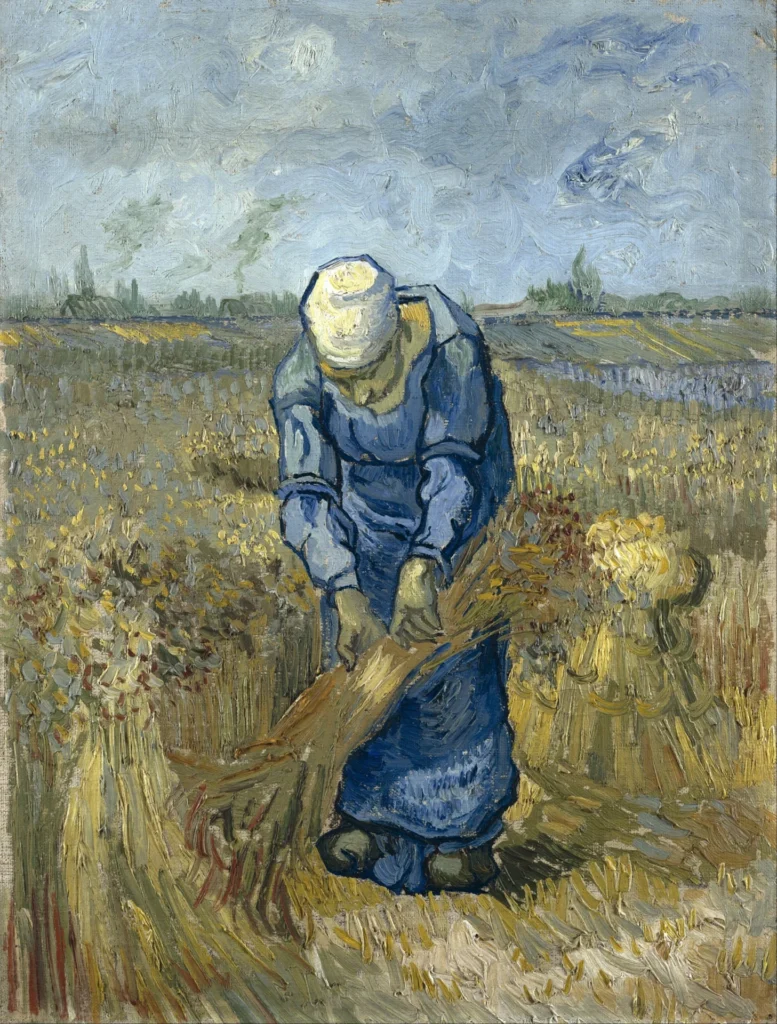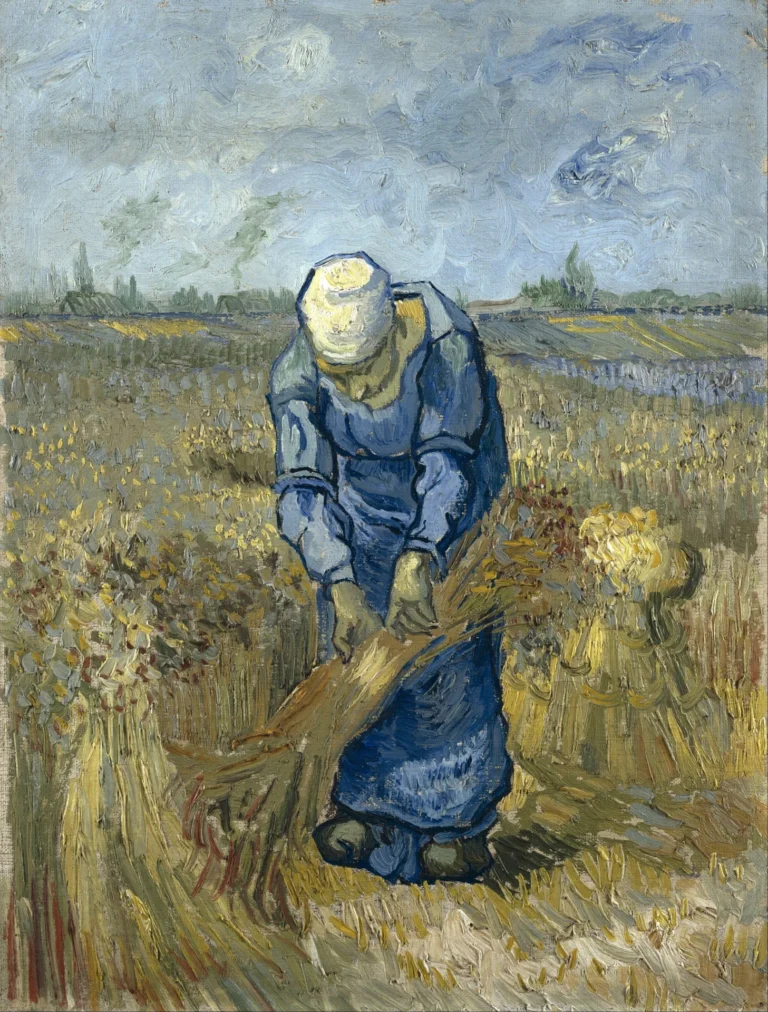Peasant Woman Binding Sheaves (After Millet)
Vincent van Gogh's Peasant Woman Binding Sheaves (after Millet) is a captivating oil painting that reflects the artist's admiration for Jean-François Millet’s style. Created in September 1889 during Van Gogh's time at the asylum in Saint-Rémy-de-Provence, this artwork is one of twenty adaptations he made of Millet's prints. Though he lacked live models, this creative endeavor helped him regain his confidence while showcasing his ability to blend Millet’s themes with his own vibrant color palette. Measuring 43.2 cm by 33.2 cm, it now resides in the Van Gogh Museum in Amsterdam.
September 1889
About the Artwork
Did You Know
Liked what you see? Add it to your collection.
Enjoyed reading? Share it.
... continued
Inspiration and Context
The painting is one of twenty copies Van Gogh made of prints by the French artist Jean-François Millet. Van Gogh was deeply influenced by Millet's work and created these copies as a way to practice figure painting, even though he had no live models available. This process helped him rebuild his self-confidence, which had been affected by his illness.
Style and Medium
The painting is executed in the Post-Impressionist style, using oil on canvas. It measures 43.2 cm x 33.2 cm.
Provenance
The painting was likely sent by Van Gogh to his brother Theo in Paris at the end of April 1890. After Theo's death, it was inherited by his widow, Jo van Gogh-Bonger, and later passed through several family members before being donated to the Vincent van Gogh Foundation in 1952. It is now part of the collection at the Van Gogh Museum in Amsterdam, where it has been since 1994.
Significance
Van Gogh did not view these works as mere copies but rather as adaptations of black-and-white prints into colorful paintings. This approach allowed him to interpret Millet's work in his own unique way, much like a musician interpreting another composer's work.
Exhibitions
The painting has been included in several exhibitions, including 'Vincent van Gogh. Paintings, Watercolors and Drawings' which traveled to various museums such as the Cleveland Museum of Art, the Baltimore Museum of Art, and the Museum of Fine Arts in Boston between 1961 and 1962.










